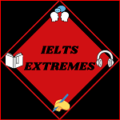Cambridge 15 listening test 3
PART 1 Questions 1-10
Complete the notes below.
Write ONE WORD AND/OR A NUMBER for each answer.
Employment Agency: Possible Jobs |
First job Administrative assistant in a company that produces 1 …………………… (North London) Responsibilities · data entry · go to 2 …………………… and take notes · general admin · management of 3 …………………… Requirements · good computer skills including spreadsheets · good interpersonal skills · attention to 4 …………………… Experience · need a minimum of 5 …………………… of experience of teleconferencing Second Job · Warehouse assistant in South London Responsibilities · stock management · managing 6…………………… Requirements · ability to work with numbers · good computer skills · very organised and 7……………………. · good communication skill · used to working in a 8…………………… · able to cope with the items that are 9…………………… Need experience of · driving in London · warehouse · 10……………………service |
PART 2 Questions 11-20
Questions 11-16
Choose the correct letter, A, B or C.
Street play Scheme
11 When did the Street Play Scheme first take place?
A two years ago
B three years ago
C six years ago
12 How often is Beechwood Road closed to traffic now?
A once a week
B on Saturdays and Sundays
C once a month
13 Who is responsible for closing the road?
A a council official
B the police
C local wardens
14 Residents who want to use their cars
A have to park in another street.
B must drive very slowly.
C need permission from a warden.
15 Alice says that Street Play schemes are most needed in
A wealthy areas.
B quiet suburban areas.
C areas with heavy traffic.
16 What has been the reaction of residents who are not parents?
A Many of them were unhappy at first.
B They like seeing children play in the street.
C They are surprised by the lack of noise.
Questions 17 and 18
Choose TWO letters, A-E.
Which TWO benefits for children does Alice think are the most important?
A increased physical activity
B increased sense of independence
C opportunity to learn new games
D opportunity to be part of community
E opportunity to make new friends
Questions 19 and 20
Choose TWO letters, A-E.
Which TWO results of the king Street experiment surprised Alice?
A more shoppers
B improved safety
C less air pollution
D more relaxed atmosphere
E less noise pollution
PART 3 Questions 21-30
Questions 21-26
Complete the notes below.
Write ONE WORD ONLY for each answer.
What Hazel should analyse about items in newspapers · what 21 ……………………… the item is on · the 22 ……………………… of the item, including the headline · any 23 ……………………… accompanying the item · the 24 ……………………… of the item, e.g. what’s made prominent. · The writer’s main 25 ……………………… · The 26 ……………………… the writer may make about reader |
Questions 27-30
What does Hazel decide to do about each of the following types of articles?
Write the correct letter, A, B or C, next to the questions 27-30
A She will definitely look for a suitable article. B She may look for a suitable article. C She definitely won’t look for an article. |
Types of articles
27 national news item …………………
28 editorial …………………
29 human interest …………………
30 arts …………………
PART 4 Questions 31-40
Complete the notes below.
Write ONE WORD ONLY for each answer.
Early history of keeping clean Prehistoric times: · water was used to wash off 31 …………………… Ancient Babylon: · Soap –like material found in 32 …………………… cylinders Ancient Greece: · people cleaned themselves with sand and other substances · used a strigil – scraper made of 33 …………………… · washed clothes in streams Ancient Germany and Gaul: · used soap to colour their 34 …………………… · Ancient Rome: · Animal fat, ashes and clay mixed through action of rain, used for washing clothes · from about 312 BC, water carried to Roman 35 …………………… by aqueducts Europe in Middle Ages: · decline in bathing contributed to occurrence of 36 …………………… · 37 …………………… began to be added to soap Europe from 17th century: · 1600s: cleanliness and bathing started becoming usual · 1791: Leblanc invented a way to making soda ash from 38 …………………… · early 1800s: Chevreul turned soapmaking into a 39 …………………… · from 1800s, there was no longer a 40 …………………… on soap |

